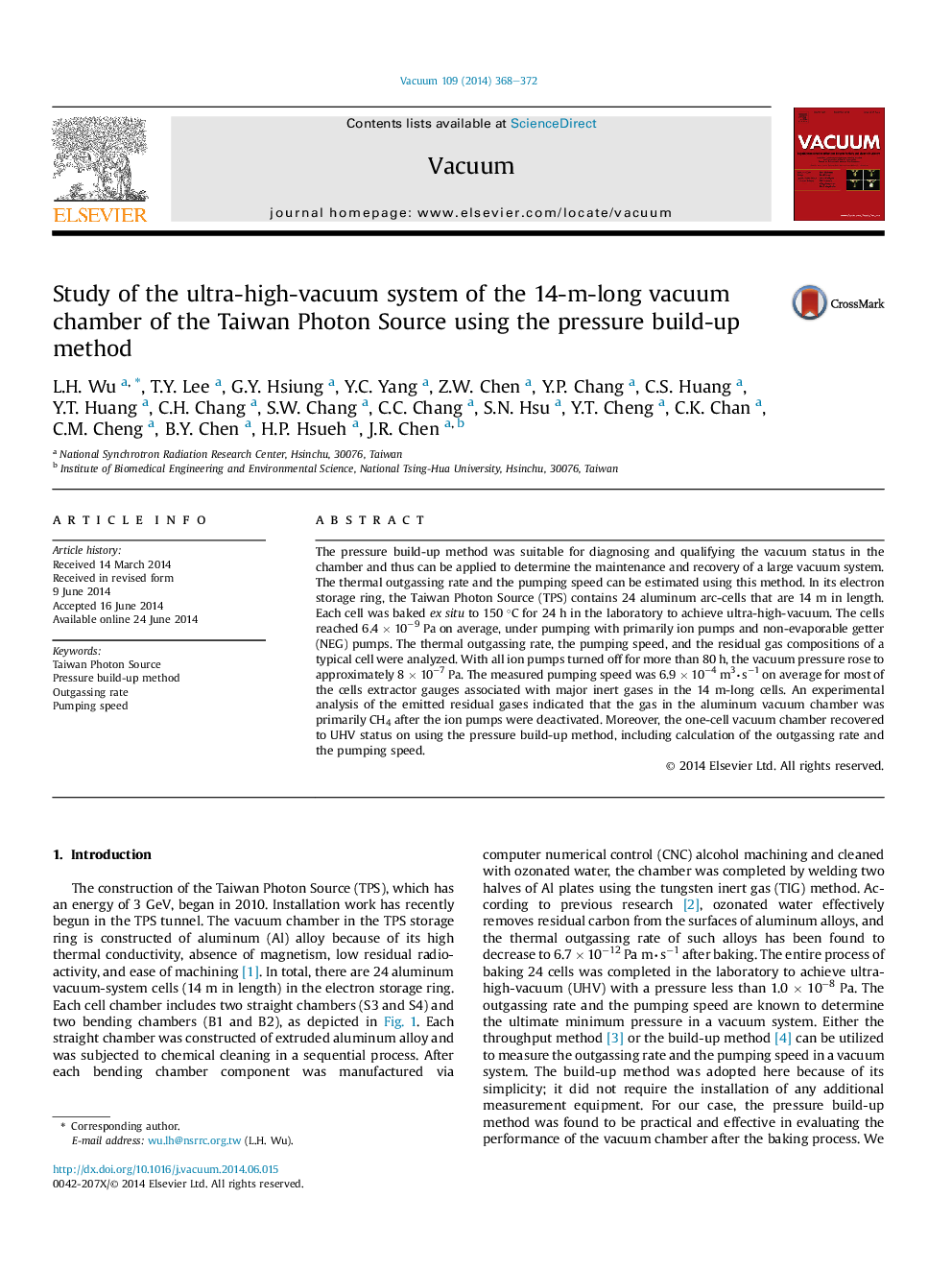| Article ID | Journal | Published Year | Pages | File Type |
|---|---|---|---|---|
| 1688445 | Vacuum | 2014 | 5 Pages |
Abstract
The pressure build-up method was suitable for diagnosing and qualifying the vacuum status in the chamber and thus can be applied to determine the maintenance and recovery of a large vacuum system. The thermal outgassing rate and the pumping speed can be estimated using this method. In its electron storage ring, the Taiwan Photon Source (TPS) contains 24 aluminum arc-cells that are 14 m in length. Each cell was baked ex situ to 150 °C for 24 h in the laboratory to achieve ultra-high-vacuum. The cells reached 6.4 Ã 10â9 Pa on average, under pumping with primarily ion pumps and non-evaporable getter (NEG) pumps. The thermal outgassing rate, the pumping speed, and the residual gas compositions of a typical cell were analyzed. With all ion pumps turned off for more than 80 h, the vacuum pressure rose to approximately 8 Ã 10â7 Pa. The measured pumping speed was 6.9 Ã 10â4 m3âsâ1 on average for most of the cells extractor gauges associated with major inert gases in the 14 m-long cells. An experimental analysis of the emitted residual gases indicated that the gas in the aluminum vacuum chamber was primarily CH4 after the ion pumps were deactivated. Moreover, the one-cell vacuum chamber recovered to UHV status on using the pressure build-up method, including calculation of the outgassing rate and the pumping speed.
Keywords
Related Topics
Physical Sciences and Engineering
Materials Science
Surfaces, Coatings and Films
Authors
L.H. Wu, T.Y. Lee, G.Y. Hsiung, Y.C. Yang, Z.W. Chen, Y.P. Chang, C.S. Huang, Y.T. Huang, C.H. Chang, S.W. Chang, C.C. Chang, S.N. Hsu, Y.T. Cheng, C.K. Chan, C.M. Cheng, B.Y. Chen, H.P. Hsueh, J.R. Chen,
